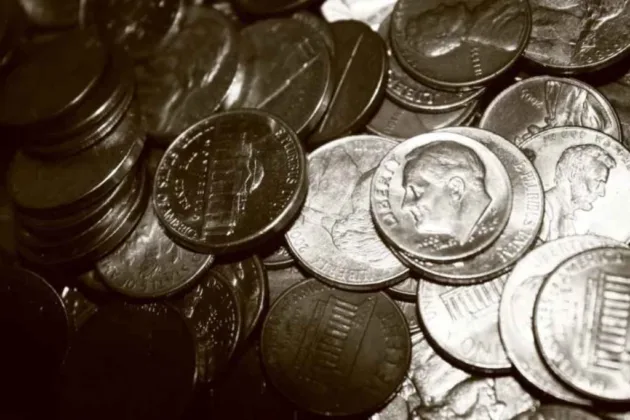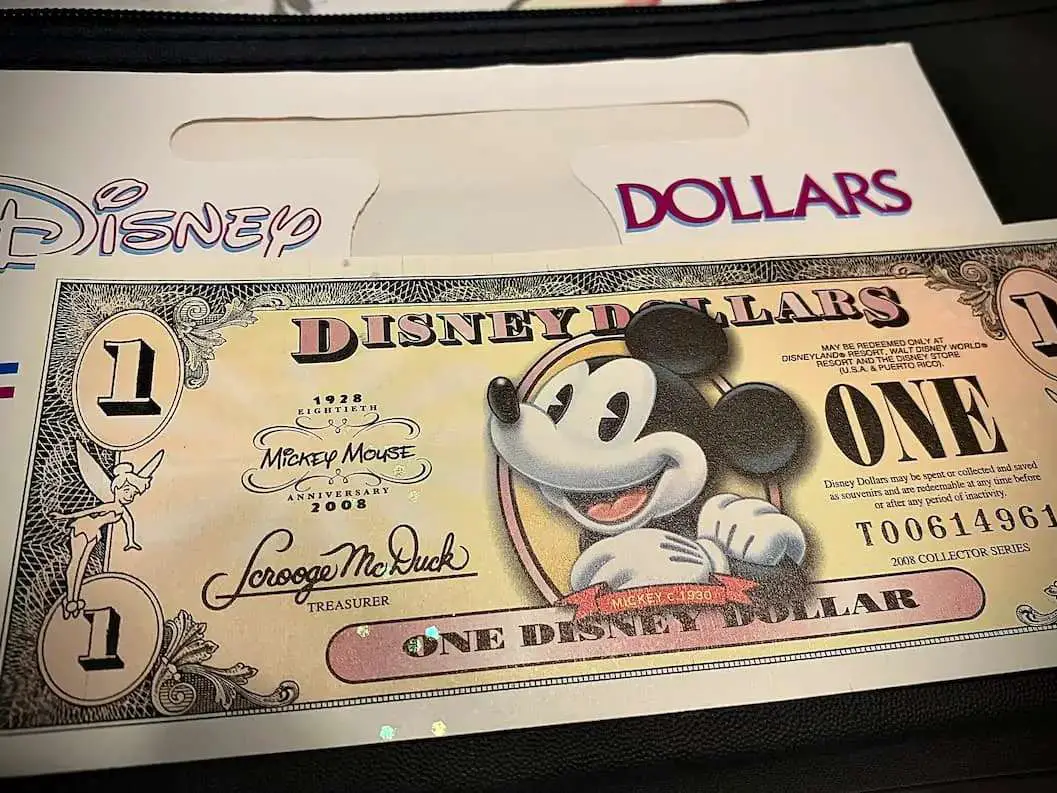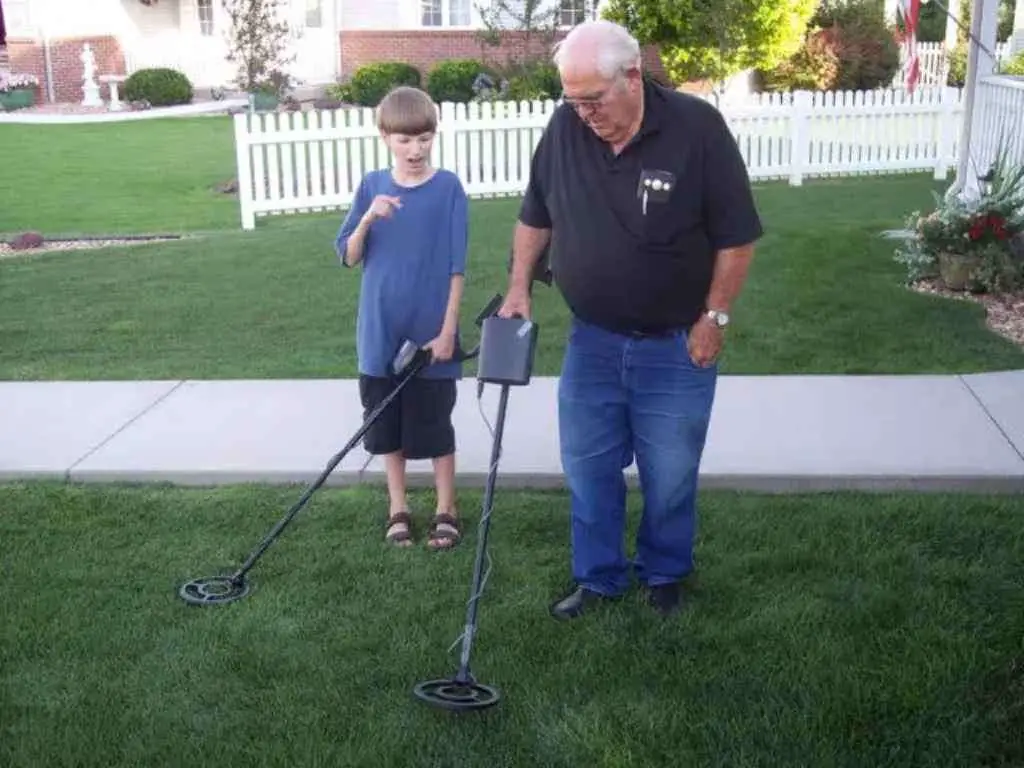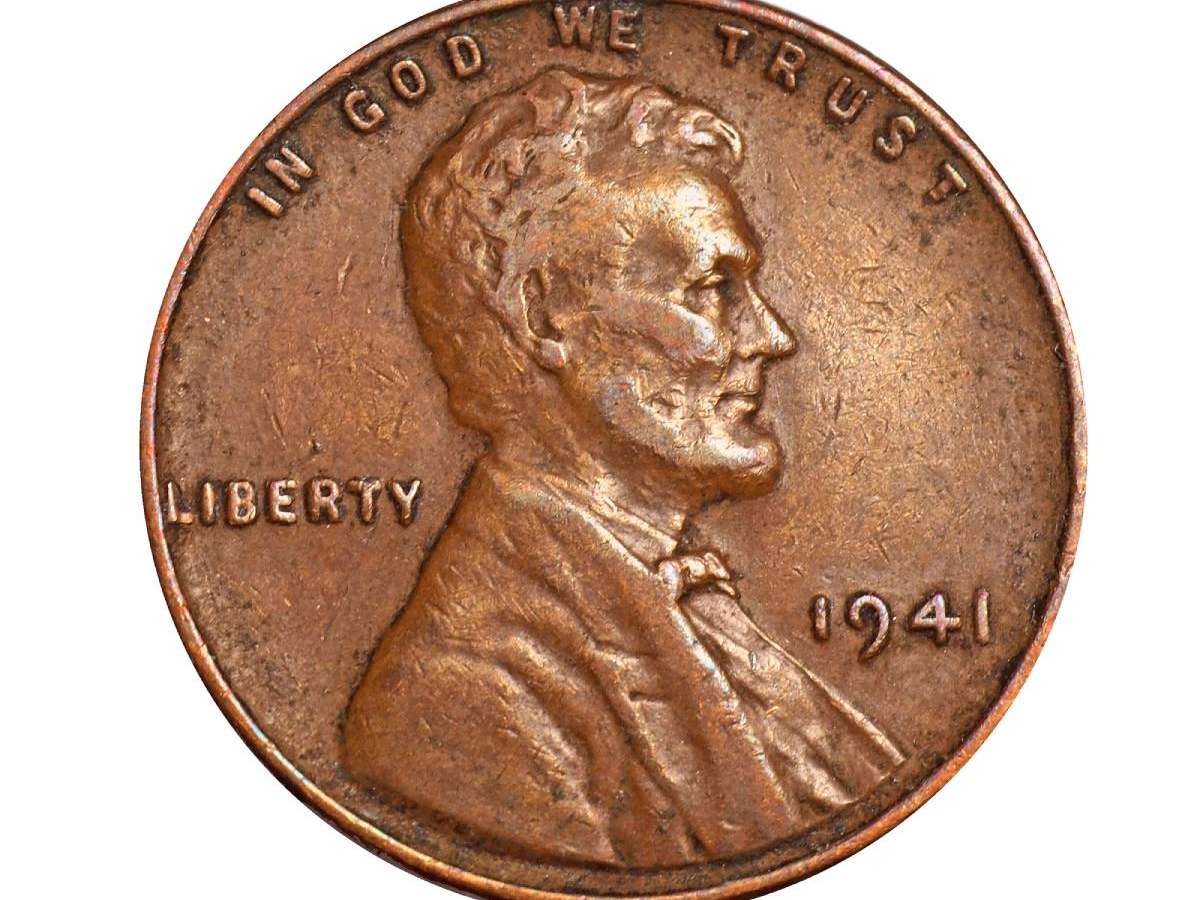Seems like most of the coins we see are round…
Have you ever wondered why coins are round and not square?
Why are coins made that way?

Coins have been round for millennia…
Go back thousands of years even and you’ll see that even then they were round. Or at least a semblance of round, anyway.
There’s A Reason Coins Are Round (Many Reasons, Actually!)
With all the shapes out there, why did coins have to be round?

It wasn’t some random decision! In fact, it had less to do with choosing one shape over another and more to do with the practicality of striking coinage — especially thousands of years ago, when the minting process was still relatively primitive.
When coins as we know them today first came into existence around 600 BC, their designs were hammered onto the blank coin. The process of striking coins with a hammer tended to make the coins form into a roundish shape. Thus, the round coin was born!
These round-shaped coins were easy to make, and they didn’t require any special forms to create — other than the head’s side (obverse) die and tail’s side (reverse) die.
Without forms, this meant the round(ish) coins often took on a fairly irregular shape, which many ancient and medieval coins assume.
As new minting techniques and technologies were adopted by later generations of coiners, the round or disc-like shape of the coins eventually were refined.
Other Reasons Coins Are Round
After centuries of making round coins, they proved not only easier to make than coins of other shapes, but they also caught on in society.
Countries and kingdoms around the world were striking round coins — if not by hammer then by screw press, and then later by machinery operated by livestock, steam, or electricity.
Over time, the roundness of the coins became more uniform and consistent. At the same time, the design, lettering, and other elements of the coins became more elaborate.
Something else that occurred as time went on? More and more people were shaving or clipping small amounts of metal off the edges of silver and gold coins in an attempt to score some free bullion. And then, they would attempt to still spend the coin at its full face value! This, of course, is fraudulent.
Round coins have the least amount of perimeter as opposed to other shapes (such as squares and triangles) — which minimizes how much can be shaved or clipped from the edge.
By the way… Clipping and shaving is also why coins have ridges on their sides.
The ridges (known as reeds or reeding) not only helped to prevent shaving and clipping back in the day, but they also serve important uses today! When base metals are used in circulating coins, the side ridges help to improve the edge grip of the coin (like when inserting the coin into a vending machine). The ridges on the side also help those with visual impairments identify which coins they have simply by feeling them.
If It’s Not Broke, Don’t Fix It
Round coins have simply stood the test of time. Millennia… really.
They are by far the easiest shape to mass produce in coinage — even today, where we have the minting technology to produce coins in just about any shape imaginable.
Round coins don’t have sharp corners or edges that can get bruised or beaten up. That means that round coins are stronger and more durable to last long term in circulation. In fact, the typical coin will last some 30 years in circulation, and many will continue in use for several years more than that.
You know what else? Round coins showed that they were easy to use in vending machines, which came into widespread use during the late 19th and early 20th centuries. Imagine trying to shove square- or triangle-shaped coins into coin slots! They just wouldn’t roll as easily down the chute as round coins, would they?
It’s pretty easy to stack round coins, too.
And round coins wrap nicely into rolls. It would be pretty hard to “roll” a stack of square coins! Ditto for coins of other shapes, too.
Speaking of rolling… we wouldn’t be able to have any of those fun coin tornadoes, if not for round coins! Some call them coin vortex banks:
Did The United States Ever Strike Coins That Weren’t Round?
Yes, there are U.S. coins that aren’t round!
Not many, mind you… But there are occasions throughout history when the United States Mint struck coins in shapes other than round, or circular, or discs.
One of the most notable occasions came in 1915, when the U.S. Mint struck a large gold commemorative coin in an octagonal shape. This coin is known as the 1915-S Octagonal $50 Panama-Pacific Exposition commemorative. It was produced by the San Francisco Mint for the World’s Fair held in San Francisco that year. It has an 8-sided shape as a symbolic remembrance of privately struck octagonal gold ingots made during the Gold Rush glory days in San Francisco during the early 1850s.
Today, the 1915-S Octagonal $50 Panama-Pacific Exposition gold commemorative (often shorthanded by coin collectors as the “octagonal $50 Pan-Pac”) is a very rare and sought-after coin. Only 645 were made, and they routinely sell for more than $100,000 today!
In the late 1970s, when the United States Mint was deciding on the details around the mini-sized Susan B. Anthony dollar, there were proposals to make it an 11-sided coin. This, as you can imagine, would’ve made it a very distinctive coin — quite unlike all the round coins in U.S. circulation. A round-shaped coin, much easier to produce, became the winner of that deliberation.
Even though the Susan B. Anthony dollar has a unique, 11-sided rim (not edge), too many people confused the round Susan B. Anthony dollar with its similarly sized round quarter-dollar counterpart. Subsequently, the Susan B. Anthony dollar fell out of favor with the public in short order and lasted only a few years in production.
One might say that another divergence from the traditional round-shaped coins the U.S. Mint produces are the semi-spherical pieces that debuted in 2014 with the National Baseball Hall of Fame commemorative coins. These pieces, with their concave obverse and convex reverse, were unlike anything else the U.S. Mint had ever produced to that time!
Since then, other such domed-shaped coins have been struck — including those made in 2019 to commemorate the 50th anniversary of the Apollo 11 lunar landing in 1969.
What Other Shapes Do Coins Come In?
There’s just no other way to say it… Round coins pretty much rule the world. They have been around for millennia, mints can easily make them, and most people seem to love them.
That much being said, coins do come in shapes other than round.
A List Of Various Coin Shapes
These are some of the other shapes that coins have been struck in:
- Round coins with holes have a long history in parts of the world.
- Oval coins include the 19th-century Japanese 100 mon tenpo tsuho.
- Triangular coins have been struck in the Cook Islands, boasting a 3-sided $2 coin.
- Rectangular coins go pretty far back — as seen in the Japanese bar money of the late 16th and 17th centuries.
- Square coins have been made by a whole host of nations, including Aruba, India, Maldives, and Pakistan, among many other countries.
- Heptagon coins with 7 sides are seen in the likes of British 50 pence coinage.
- Octagonal coins like the 1915-S Octagonal $50 Panama-Pacific commemorative gold coin have been mentioned above, but you probably weren’t aware of the 8-sided Egyptian 2-1/2 millieme, were you?
- Nonagonal coins are your thing? Then be sure to check out the 9-sided Thailand 5 baht coin!
- Decagonal coins with 10 sides count certain 1970s Hong Kong $5 coins among their ranks.
- Hendecagonal coins never claimed the Susan B. Anthony dollar (as discussed above), but the golden-colored Canadian “Loonie” dollar is an 11-sided coin!
- Dodecagonal coins with 12 sides are many — including the British 1 pound coin.
- Tridecagonal coins sporting 13 sides kicked off in 1993 with the Czech Republic’s 20 koruna.
- Tetradecagonal coins with 14 sides were first seen in 1976, when Malaysia struck special 10 ringgit and 200 ringgit coins.
- Pentadecagonal coins have 15 sides, and the United Arab Emirates struck such a 5 dirham piece in 1981.
- Scalloped coins are pretty cool — like the Vanuatu 100 vatu.
- Ever seen coins in the shape of skulls, Coca-Cola bottles, or even C-3PO? Well, they’re out there! There are coins in so many unique shapes these days, it seems the only limitation factor now is the imagination of mints and coin designers!
I’m the Coin Editor here at TheFunTimesGuide. My love for coins began when I was 11 years old. I primarily collect and study U.S. coins produced during the 20th century.
I’m a member of the American Numismatic Association (ANA) and the Numismatic Literary Guild (NLG) and have won multiple awards from the NLG for my work as a coin journalist. I’m also the editor at the Florida United Numismatists Club (FUN Topics magazine), and author of Images of America: The United States Mint in Philadelphia (a book that explores the colorful history of the Philadelphia Mint). I’ve contributed hundreds of articles for various coin publications including COINage, The Numismatist, Numismatic News, Coin Dealer Newsletter, Coin Values, and CoinWeek.
I’ve authored nearly 1,000 articles here at The Fun Times Guide to Coins (many of them with over 50K shares), and I welcome your coin questions in the comments below!





